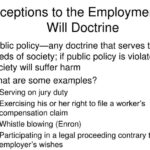Aldridge Tail Insurance provides coverage for professionals after their primary liability insurance policy expires. It protects against claims made for incidents that occurred during the coverage period but were reported after the policy ended. This insurance is crucial for those transitioning out of their practice or retiring, ensuring ongoing protection against potential legal risks.
Why Aldridge Tail Insurance Matters
Aldridge Tail Insurance is vital for professionals who need extended protection beyond their primary liability policy’s expiration. It covers claims related to incidents that occurred while the original policy was active but are reported after it has ended.
This insurance matters because it safeguards against potential legal risks that could arise from past work, especially in professions like medicine, law, or consulting, where claims can surface long after services have been rendered. Without tail insurance, professionals could face significant out-of-pocket expenses if they’re sued for issues related to their previous practice.
Who Should Consider Aldridge Tail Insurance?
Professionals nearing retirement, transitioning between jobs, or closing their practice should strongly consider Aldridge Tail Insurance. It’s particularly beneficial for those in fields where claims can be filed years after the initial service, such as doctors, lawyers, and consultants.
If you’re leaving a job or retiring, this insurance ensures that you remain protected against future claims that could otherwise threaten your financial stability. Essentially, if your career involves providing services with a long potential claims period, Aldridge Tail Insurance offers peace of mind and financial security.
How Aldridge Tail Insurance Works

Aldridge Tail Insurance works by extending the coverage period of your existing liability insurance policy. Once your primary policy expires, tail insurance kicks in to cover any claims made for incidents that occurred during the policy period but are reported afterward.
To obtain this insurance, you typically need to purchase it before your original policy ends. Premiums for tail insurance vary based on the risk profile and length of the extended coverage. In the event of a claim, it functions similarly to your original policy, covering legal fees, settlements, or judgments up to the policy limits. This ensures that even after your practice has ended, you remain protected from unforeseen legal issues arising from past work.
Comparing Aldridge Tail Insurance to Other Types of Insurance
Aldridge Tail Insurance provides coverage for claims made after your original policy ends, protecting you from incidents that occurred during the policy period but are reported later. It’s specifically designed to extend coverage after your primary insurance has expired.
Occurrence-Based Insurance covers incidents that happen during the policy period, regardless of when the claim is reported. This type of insurance offers protection throughout the life of the claim, as long as the incident occurred while the policy was active. Unlike tail insurance, occurrence-based policies do not require additional coverage after expiration.
Aldridge Tail Insurance vs. Extended Reporting Period Insurance
Extended Reporting Period Insurance (ERP) extends the time during which you can report claims after your policy expires, typically offered as part of a standard policy upgrade. ERP insurance covers claims made after the policy period for a specified duration, but it usually requires an additional premium.
Aldridge Tail Insurance offers a similar function but is often purchased separately and may provide longer or more flexible coverage terms. Tail insurance ensures that you are protected beyond the typical ERP period, offering a safety net for claims that could arise many years after your policy ends.
How to Choose the Right Aldridge Tail Insurance Policy
When selecting an Aldridge Tail Insurance policy, consider coverage limits, the duration of coverage, and the reputation of the insurance provider. Ensure the policy extends far enough beyond your primary policy’s expiration to protect against potential future claims. Compare providers to find one with a strong track record in handling claims efficiently and offering competitive rates.
Also Read : Tires Financing With Bad Credit
What Is Tail Coverage for Insurance?
Tail coverage, or tail insurance, extends the protection of your primary liability insurance after it ends. It covers claims made for incidents that occurred during the original policy period but are reported afterward. Tail coverage is crucial for professionals who may face lawsuits long after their primary policy has expired, providing ongoing protection against unexpected legal claims.
How Long Should Tail Coverage Last?

The duration of tail coverage depends on the profession and potential risk exposure. Generally, tail coverage should last long enough to cover the period during which claims can still be made for incidents that occurred while the original policy was in effect. For many professions, this could be anywhere from 3 to 10 years, but some cases might require even longer coverage.
In fields like medicine or law, where claims can arise years after services are provided, a longer tail period is often advisable. For example, medical professionals might choose tail coverage that lasts indefinitely or until retirement. Tail coverage should align with the length of time claims could realistically be made, based on your industry’s typical statute of limitations and the specifics of your past work.
When choosing tail coverage, assess your profession’s risk factors and consult with insurance experts to determine the most appropriate duration for your needs. This ensures you maintain protection against potential legal claims long after your primary policy ends.
Why Do I Need Tail Coverage for Insurance?
Tail coverage is essential because it protects against claims made after your primary insurance policy has expired. If you’re a professional, such as a doctor or lawyer, you might face lawsuits for incidents that occurred during your policy period but are reported later.
Without tail coverage, you could be liable for significant legal costs and damages. Tail coverage ensures that you remain protected from unexpected claims after your practice ends or you transition to a new policy, offering peace of mind and financial security against potential future legal issues.
How Much Does It Cost to Add Tail Coverage?

The cost of adding tail coverage varies widely based on several factors, including your profession, the length of coverage needed, and the insurer. Generally, tail coverage premiums are calculated as a percentage of your prior policy’s annual premium, often ranging from 100% to 300% of the last year’s premium. For example, if your annual policy premium was $5,000, tail coverage might cost between $5,000 and $15,000.
The cost can also depend on your risk profile and the specific terms of the tail policy. Longer coverage periods and higher coverage limits typically increase the premium. Additionally, some insurers offer discounts or bundled options if you purchase tail coverage before your primary policy expires.
To get an accurate estimate, consult with your insurance provider and consider comparing quotes from different insurers. This helps ensure you select a policy that fits your needs and budget while providing adequate protection.
CONCLUSION :
Tail coverage is a vital safeguard for professionals transitioning out of their primary insurance policy, ensuring protection against future claims. Understanding its cost and duration helps in selecting the right policy to fit your needs. Investing in tail coverage provides peace of mind, knowing you’re protected from unexpected legal issues long after your primary coverage ends. Consult with insurance experts to find a policy that offers the right balance of coverage and affordability.
People also ask
What does tail insurance cover?
Tail insurance covers claims made after a policy ends for incidents that occurred during the policy period.
What is the difference between short-tail and long-tail insurance?
Short-tail insurance covers claims reported soon after the policy period, while long-tail insurance covers claims that arise years later.
What is D&O insurance tail?
D&O insurance tail provides extended coverage for directors and officers against claims made after their policy expires, related to decisions made during the policy period.
What is tail coverage in cyber insurance?
Tail coverage in cyber insurance extends protection for cyber incidents reported after the policy ends, covering breaches or data loss from the prior coverage period.







